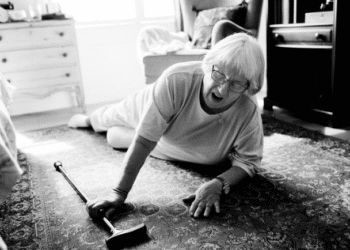
Since falls are a major source of injuries, it is imperative that vulnerable people adopt proactive preventive measures. Workers who complete this skills-building training will have the tools necessary to lower their risk of falling and react effectively when one does.
We’ll help you find the right course for your needs. Tell us a little bit about your situation and what you would like to achieve.
We’ll get back to you within one working day.
We can deliver this training at your premises, as long as it’s within the UK. Also, we have our own venues in UK if you need access to a training room (additional charges will apply). We can also deliver this training virtually using Zoom. However, sessions delivered via Zoom will be theory only and will not include any practical.
To understand how to prevent falls, enroll in our two to three hour Falls Prevention Training Course. For those who are seriously at risk, it is crucial to develop effective and efficient preventative techniques because falls are a primary source of injuries.
We’ll talk about who is at danger, why falls occur, and how to avoid them. Everyone who is concerned about falls, including caregivers and healthcare professionals, should take this course.
After you’re done, get a certificate that attests to your knowledge of public safety.
Click the “Falls online course” link to access our Fall online course.
Duration of the course: two to three hours
Level 2 of the course
Qualification: Two-year qualification
Maximum Delegates: 12
Realistically speaking: No
Unbelievably, falls happen frequently, therefore it’s critical to recognize the severity of the problem. We’ll look at data illustrating the annual number of falls-related injuries and the effects they have on patients and healthcare systems.
Lesson 1: Learning About Falls
The first step in preventing falls is to understand the “why” behind them. An inadvertent fall happens when someone falls to the ground or a lower level. However, why do people trip and fall? It’s critical to understand the causes of falls, which might include things like poor balance, weak muscles, dangerous environments, and illnesses.
Lesson 2: What is a Fall?
Some demographics are more susceptible to falls than others. To properly safeguard these people, it is imperative that we identify who they are. For example, age-related impairments in balance and movement put the elderly at greater danger. We’ll also talk about other things including prescription drugs, eye issues, and household risks that can make a person more likely to fall.
Lesson 3: Who’s at Risk?
Falls can occur in a variety of contexts and circumstances. We can prevent them more effectively if we look at where and when they happen. At home, falls occur frequently, particularly in restrooms and on stairs. They may also take place at medical facilities. Falls can have serious repercussions for people, including injuries, hospital stays, and long-term effects on healthcare resources.
Lesson 4: When and Where Falls Happen
Fall risk can be decreased by a variety of tactics and programs. Enhancing illumination, eliminating trip hazards, and exercising frequently are little but effective steps that can have a big impact. We can encourage people to take action to protect themselves and their loved ones by talking about these preventive steps.
Lesson 5: Stopping Falls
We’ll talk about what to do in the event of a fall in this section. It is essential to act appropriately and quickly. Fall reporting and recording needs to be done correctly for both the patient’s safety and the best possible care from medical experts.
Lesson 6: What to Do if There’s a Fall
This falls prevention course equips workers to protect those in their care from devastating fall-related injuries through practical prevention education.
The goal of this course is to give students a thorough grasp of fall prevention, including its causes, risk factors, and preventative measures. It emphasizes how important it is to respond quickly to protect people’s safety and wellbeing.
Answer: Anyone interested in learning more about preventing falls will benefit from taking this course. It is especially helpful for family members, caretakers, medical professionals, and everyone else who is worried about the safety of someone who is at danger of falling.
The duration of the falls prevention training course is normally two to three hours. We’ve made sure it’s useful and educational while also honoring your precious time.
Answer: Yes, there is a certification provided to all participants who successfully complete the course. This certificate is a testament to your commitment to enhancing fall prevention awareness.
It is not possible to take this course online. This program of in-person instruction facilitates interactive learning and practical application. You will be able to interact with the content in person, take part in discussions, and ask questions. This is the link to the course’s online edition.
You will obtain a solid understanding of fall prevention with this training. You will gain knowledge of fall prevention techniques, the importance of prompt intervention, the causes and risk factors of falls, and how to react appropriately in the event of a fall. You will leave the course with the necessary practical knowledge to safeguard vulnerable people and create safer surroundings.
As I have told others… It is the best, most informative training I have ever attended